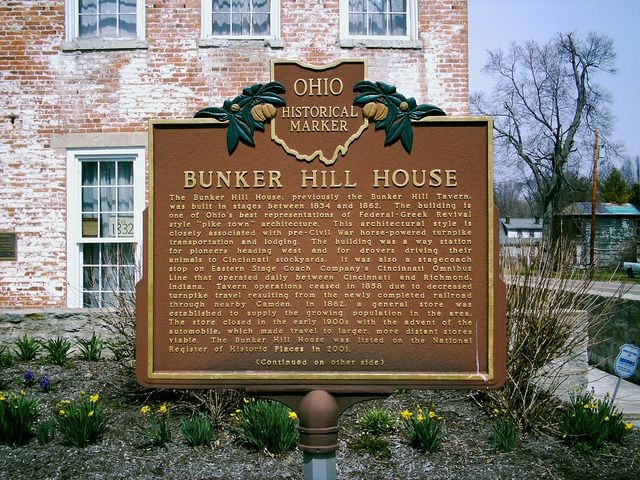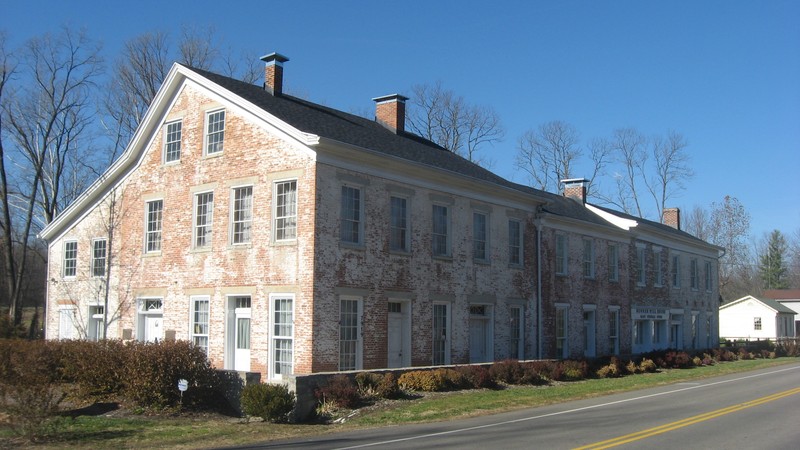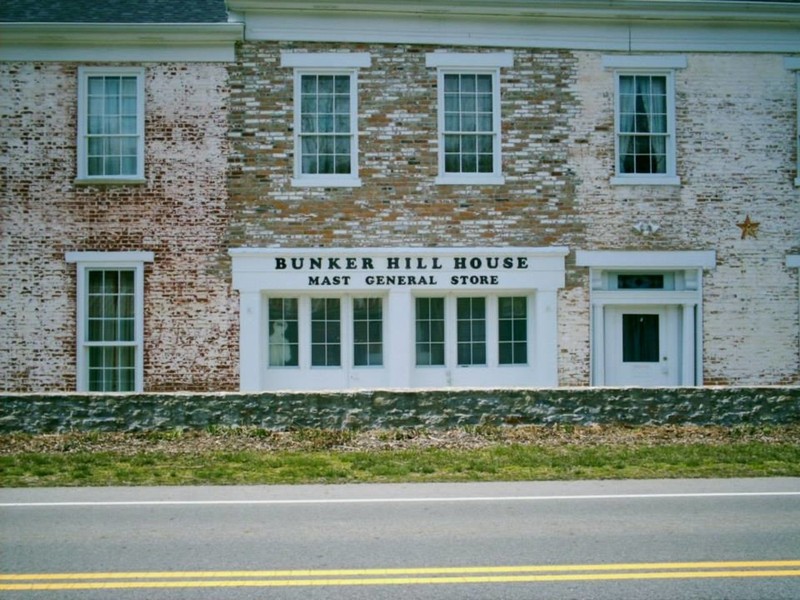Bunker Hill House
Introduction
Text-to-speech Audio
Images
Bunker Hill House's historical marker inscribing in great detail the multiple uses of this house including being a stage coach, a store, and a historic underground railroad sight.

Bunker Hill House is located right beside the road in Fair Haven, Ohio. This type of architecture is known as Federal Greek Revival style "pike town."

The Mast General Store was established to attract the growing population in this area.

Backstory and Context
Text-to-speech Audio
Bunker Hill House has served multiple purposes and circumstances. Fair Haven, where Bunker Hill House is located, became a town in 1833 after the establishment of the post office. Bunker Hill House was well under construction in 1834 after Fair Haven gained township. Beginning as a stagecoach stop off the Hamilton, Fair Haven, and Richmond turnpike. Leading to a general store and eventually becoming an Underground Railroad cite managed by Gabriel Smith. Bunker Hill House has housed many peculiar strides of history all within the walls of one building.
For pioneers heading west, Bunker Hill House was an available stagecoach stop where they could get off the turnpike and stay at the tavern. This stop was in operation daily and was located on the Eastern Stage Coach's Company Cincinnati Omnibus Line. The tavern was in operation until 1858 when a railroad was built through Camden. Unfortunately, the railroad went past Fair Haven and claimed the previous traveler's visitation. This caused for the tavern to cease operation.
The next stage of
operation for Bunker Hill House was the opening of the Mast General Store in
1862. The purpose of this store was to supply the needs of the growing
population in Fair Haven. Amid the opening of the store, it also became an Underground
Railroad cite operated by a free Black man named Gabriel Smith or 'Old Gabe,’
according to the article by Charlie Claywell. Gabriel's room in Bunker Hill
House was a tiny closet built under a staircase in the kitchen to conceal
the true identity of the house. The route that Old Gabe led the runaway slaves
down included running along Four Mile Creek to Bunker Hill House continuing to
north Canada. Bunker Hill House served as a place to seek refuge, or a resting
place before continuing their journey with Old Gabe as the one in charge. Eventually,
the general store was closed in the 1900s due to the invention of automobiles.
Residents were now able to venture longer distances to other stores
putting Bunker Hill House out of use.
Bunker Hill House has seen many walks of life
between the walls of the building. First, being built in 1834 and becoming a
stagecoach stop and tavern for traveling pioneers. After the fall of the tavern
due to the railroad that skipped over Fair Haven, it became a general store in
1862. The purpose of the store was used to supply the needs of the
townspeople in Fair Haven because the population started to grow. Bunker
Hill House is also known for its use as an Underground Railroad cite during the
same time the store was in operation. The commander over this cite was Gabriel
Smith who helped runaway slaves on their journey to freedom. The general store ceased
operation in the 1900s due to the invention of automobiles. Bunker Hill House
is not widely known, but has made an impact on many people during its years of
operation.
Sources
2. Preble County Church Plays Role In Underground Railroad. (2014, September 16). Retrieved from https://charlierclaywellwriter.com/2014/09/17/preble-county-church-plays-role-in-underground-railroad/
3. Preble County. (2019, February 10). Retrieved from https://ohioghosttowns.org/preble-county/
